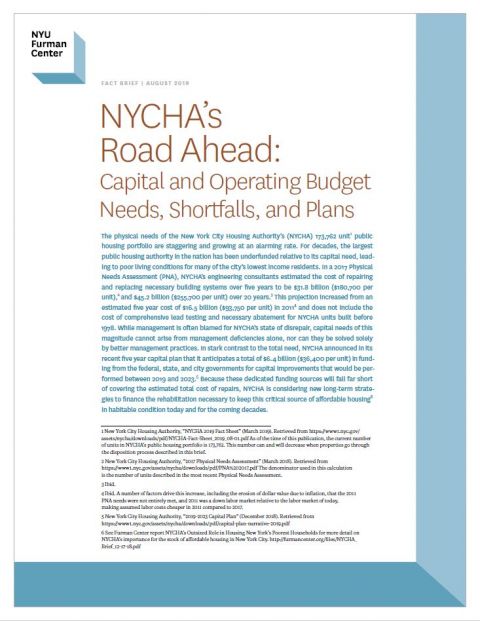Publication
NYCHA’s Road Ahead: Capital and Operating Budget Needs, Shortfalls, and Plans
The physical needs of the New York City Housing Authority’s (NYCHA) 173,762 unit public housing portfolio are staggering and growing at an alarming rate. For decades, the largest public housing authority in the nation has been underfunded relative to its capital need, leading to poor living conditions for many of the City’s lowest income residents. In stark contrast to the total need, NYCHA announced in its recent five year capital plan that it anticipates a total of $6.4 billion ($36,400 per unit) in funding from the federal, state, and city governments for capital improvements that would be performed between 2019 and 2023. In December 2018 NYCHA announced a new plan (“NYCHA 2.0”) to tackle its capital needs backlog. NYCHA estimates that over the next 10 years, its plan could raise up to $24 billion ($136,400 per unit) to cover capital repairs. The plan does not come without uncertainties.
This brief contextualizes NYCHA’s budget and its plans to address budget shortfalls. First, we focus on the capital budget, describing NYCHA’s new plan and the barriers that exist to implementing NYCHA 2.0. Next, we turn to the operating budget, and describe and assess the budget deficit, as well as NYCHA’s existing plans to address the shortfall.



